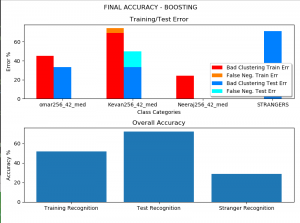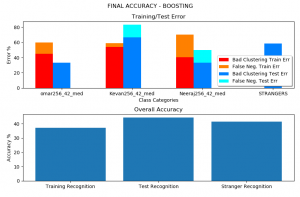This week I updated some of the preprocessing to adjust our preprocessed image outputs since we weren’t observing accuracy improvements. For now, I have also updated some of the training images in a separate branch of the project, removing all images where the subject is not looking at the camera as we believe this is hampering our accuracy.
Mainly I have been working on rewriting the PCA and LDA code in a separate branch, making it simpler and primarily to see if the rewrite cures any of the issues present. I also feel that I can probably integrate my preprocessing into the new code better.
I am on schedule for the week as our updated schedule involves working on enhancing recognition accuracy for these two weeks (last week and this one). I feel that with this rewritten PCA/LDA, we can get the accuracy improvements necessary.
I expect to have the PCA/LDA rewrite done by Monday night, or Tuesday, and following that I want to try some additional preprocessing methods that I have found in research papers that might improve our accuracy.


